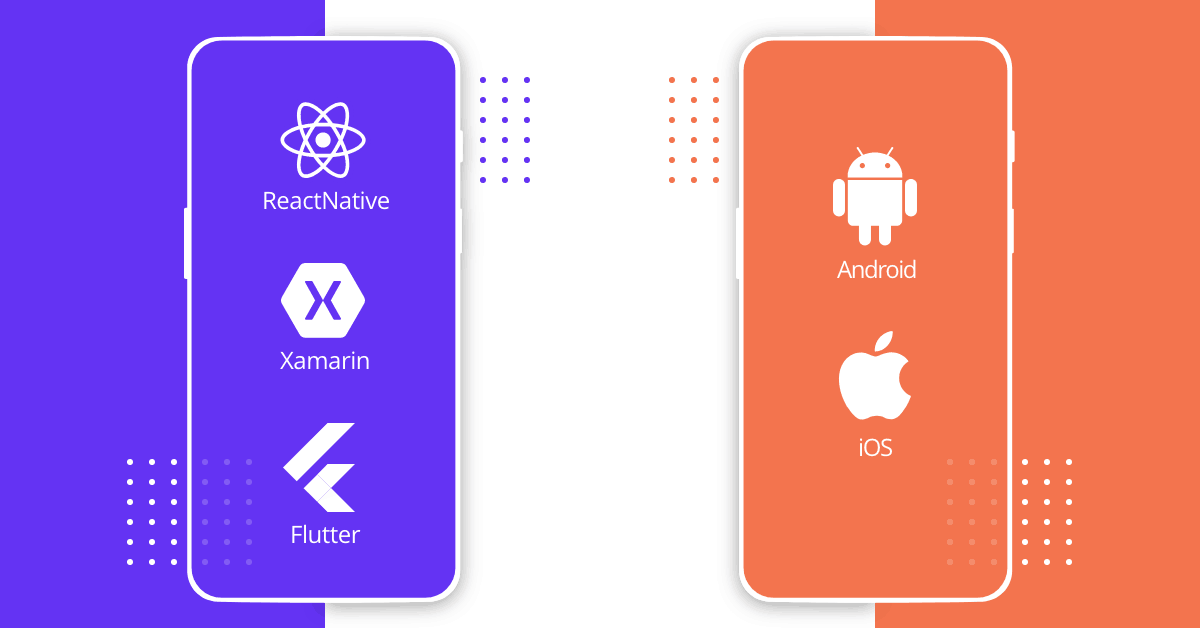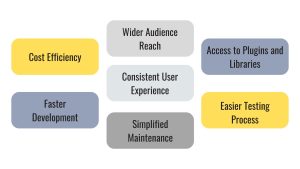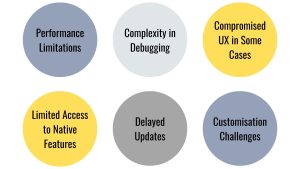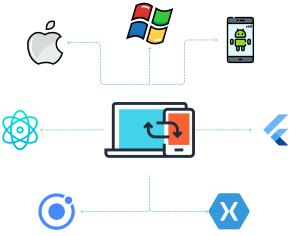Pros and Cons of Cross-Platform App Development
Introduction In today’s mobile world, companies looking to reach a wider audience often face the challenge of developing apps that will work seamlessly across multiple platfor...

Introduction
In today’s mobile world, companies looking to reach a wider audience often face the challenge of developing apps that will work seamlessly across multiple platforms. Cross-platform app development has become a popular solution, allowing developers to create apps that work on both Android and iOS using a single code base. However, like any approach, cross-platform development has its strengths and weaknesses. This article will cover the pros and cons of cross-platform app development, and provide guidance on when it might be the right choice for your project.
What is Cross-Platform App Development
Cross-platform app development refers to the process of creating mobile apps that can run on multiple operating systems (OS), primarily Android and iOS, using a single code base. Unlike native app development, which requires separate code for each platform, cross-platform tools such as React Native, Flutter, and Xamarin allow developers to write code once and deploy it to multiple platforms.
Pros of Cross-Platform App Development

Cost Efficiency
One of the most important benefits of cross-platform development is its cost-effectiveness. Since Android and iOS share the same code base, companies save on development costs. Instead of having two separate teams for in-house development, one team can build and maintain an app for both platforms, reducing time and effort.
Faster Development
Cross-platform development speeds up the app creation process because there is no need to write separate code for different platforms. Tools like Flutter and React Native come with ready-made modules and libraries that speed up development even more. For startups and businesses with tight deadlines, cross-platform app development is an attractive option for getting an app to market quickly.
Wider Audience Reach
By developing an app for multiple platforms at once, companies can reach a wider audience. Android and iOS have huge user bases, and a cross-platform app allows companies to reach both groups of users without investing additional time and resources. This approach maximises reach and ensures that no potential user base is missed.
Consistent User Experience
Cross-platform development allows for a consistent design and user experience (UX) across all platforms. Developers can use common components to ensure that the app looks and behaves consistently across both Android and iOS. This consistency helps strengthen brand identity and ensures that users have a consistent experience regardless of their device.
Simplified Maintenance
Because cross-platform apps share a single code base, maintaining and updating the app is easier. Bug fixes, feature updates, and enhancements only need to be applied once, and the changes will be reflected on both platforms. This significantly reduces the complexity and cost of support after launch.
Access to Plugins and Libraries
Cross-platform frameworks like Flutter and React Native offer a wide range of plugins and libraries, allowing developers to access platform-specific features (such as GPS or camera functionality) without writing extensive code. This helps bridge the gap between native and cross-platform development, giving developers access to the features they need and saving time.
Easier Testing Process
Testing a cross-platform app is more efficient because only one code base is used for testing. This simplifies quality assurance and reduces the number of tests required to ensure the app is functional across platforms. Automated testing tools can further streamline the process by helping to identify issues before deployment.
Cons of Cross-Platform App Development

Performance Limitations
Although cross-platform development has made significant strides in recent years, it may still lag behind in terms of performance compared to native apps. Native apps are optimised specifically for their platform (Android or iOS), resulting in faster loading times and a smoother user experience. On the other hand, cross-platform apps may experience slight lags or performance limitations, especially in resource-intensive apps like games or apps that rely on intensive graphics processing.
Limited Access to Native Features
While cross-platform frameworks provide access to many native device features, some features may be difficult to implement or only available in native development environments. For example, integrating advanced features such as AR (augmented reality) or native machine learning libraries may require custom code, which complicates the development process and negates some of the cost-saving benefits of cross-platform development.
Complexity in Debugging
Because cross-platform apps rely on a single code base to run on multiple platforms, identifying and fixing bugs can be more challenging. Issues that appear on one platform may not appear on another, making it difficult to track down the root cause. Debugging platform-specific bugs may require additional tools or even changes to your own code, which can slow down development.
Delayed Updates
Cross-platform frameworks rely on third-party tools and libraries to function, meaning that updates to Android or iOS may not be reflected in the framework immediately. When a new feature is released in a native OS, it may take time for cross-platform tools to fully support the new functionality. This delay can put cross-platform apps at a disadvantage compared to native apps that can immediately take advantage of new OS features.
Compromised User Experience in Some Cases
While cross-platform apps provide consistency across devices, they can struggle to deliver the same level of user experience that native apps offer. For example, iOS and Android have different design guidelines and user interface (UI) standards. Cross-platform apps can struggle to perfectly replicate platform-specific looks and behaviours, which can result in a slightly off-kilter experience for users accustomed to the native design patterns of their device’s OS.
Customisation Challenges
Customisation can be more complex in cross-platform development. If a business requires highly customised features or designs that vary significantly between Android and iOS, implementing these unique elements can be difficult. In such cases, developers may need to write additional code for each platform, which reduces the time-saving benefits of cross-platform development.
When to Choose Cross-Platform Development
Despite its drawbacks, cross-platform development is a great solution for many use cases. It’s ideal when:
- Cost and time are top priorities: If you need to get your app up and running quickly and on budget, cross-platform development can help.
- You want to reach a wide audience: Companies targeting both Android and iOS users can save time and resources with cross-platform apps.
- The app requires simple functionality: For apps that don’t rely heavily on platform-specific features, cross-platform tools offer more than enough functionality.
- Consistency is key: If brand consistency and a consistent UX across all platforms are critical, cross-platform development ensures a cohesive look and feel.

When Native Development Might Be Better
However, custom development may be the best option in certain scenarios:
- Performance is critical: For apps that require extreme performance (such as games or heavy multimedia apps), custom development is often the best choice.
- Need platform-specific features: If your app needs to use advanced features available on certain platforms, custom development can provide more flexibility.
- Requires complex customisations: When your app requires completely unique UI/UX elements or functionality tailored to each platform, custom development may be the best solution.
Conclusion
Cross-platform app development offers many benefits, including cost savings, faster development, and a wider audience reach. However, it also has its limitations, especially in terms of performance, access to native features, and customisation options. By weighing the pros and cons and taking into account the specific needs of your project, you can determine whether cross-platform development or native development is the best approach for your app.
For companies looking to build cost-effective and versatile apps, cross-platform development is often a viable and effective option. However, it is important to be aware of its limitations and ensure that your project matches the strengths of cross-platform frameworks.